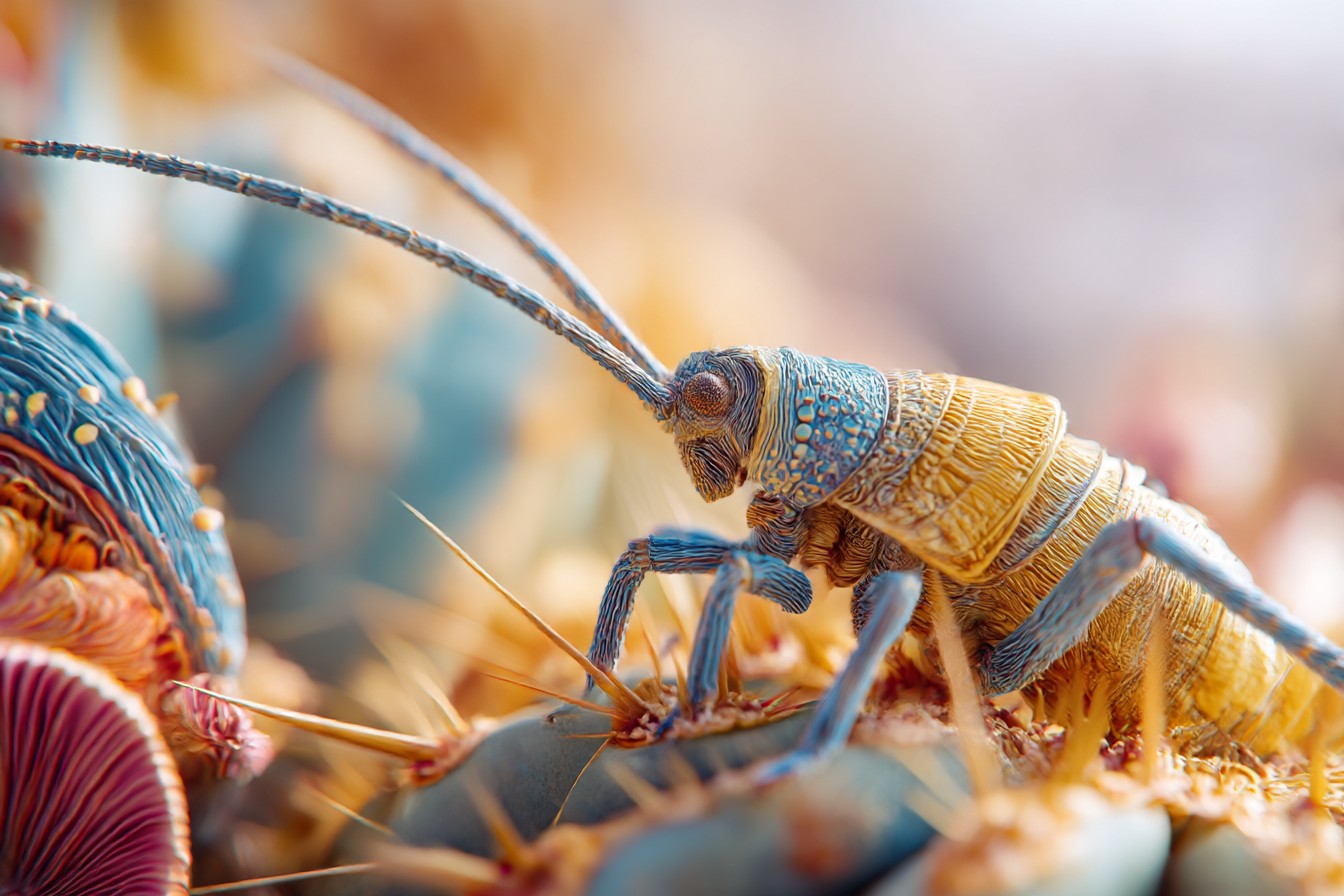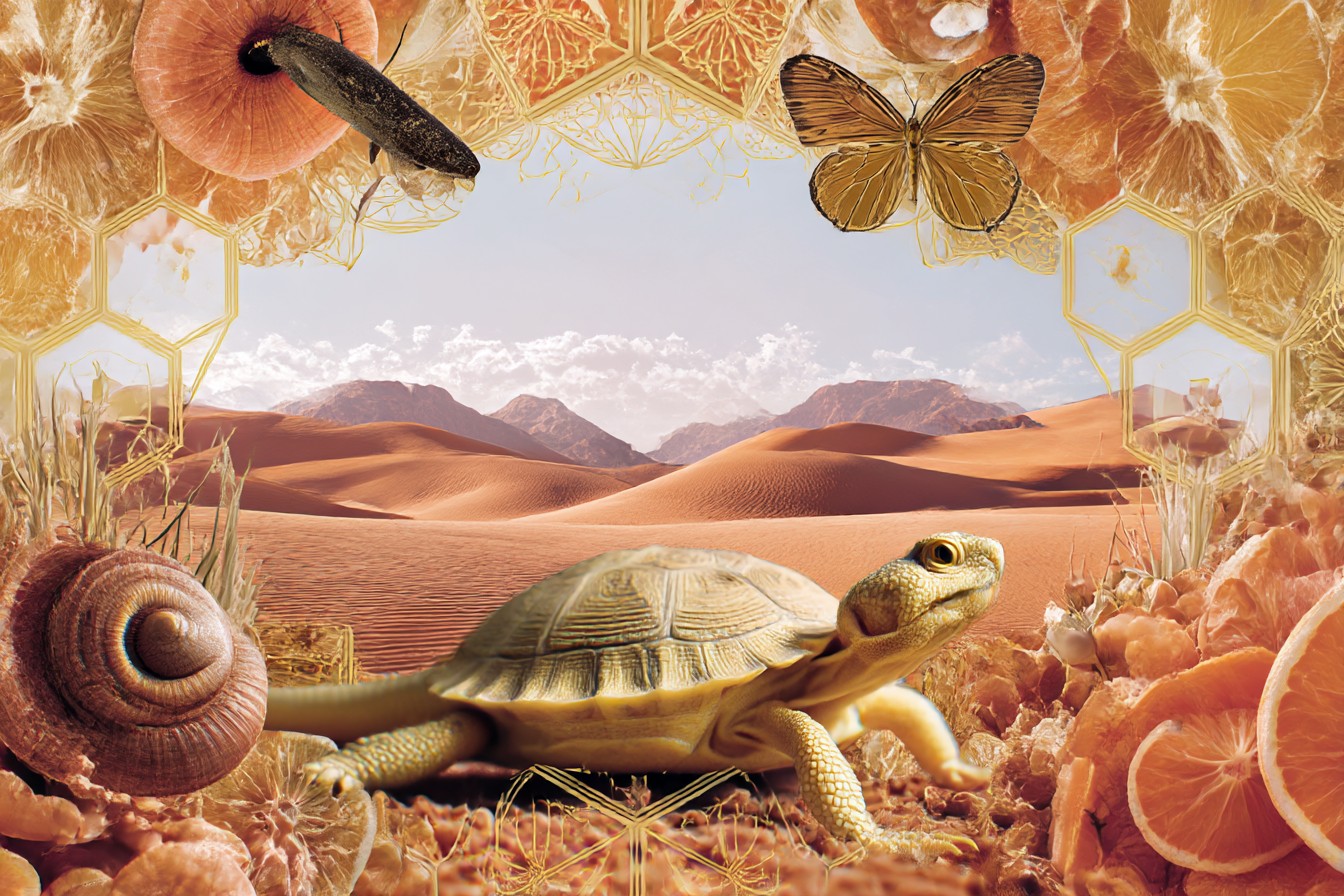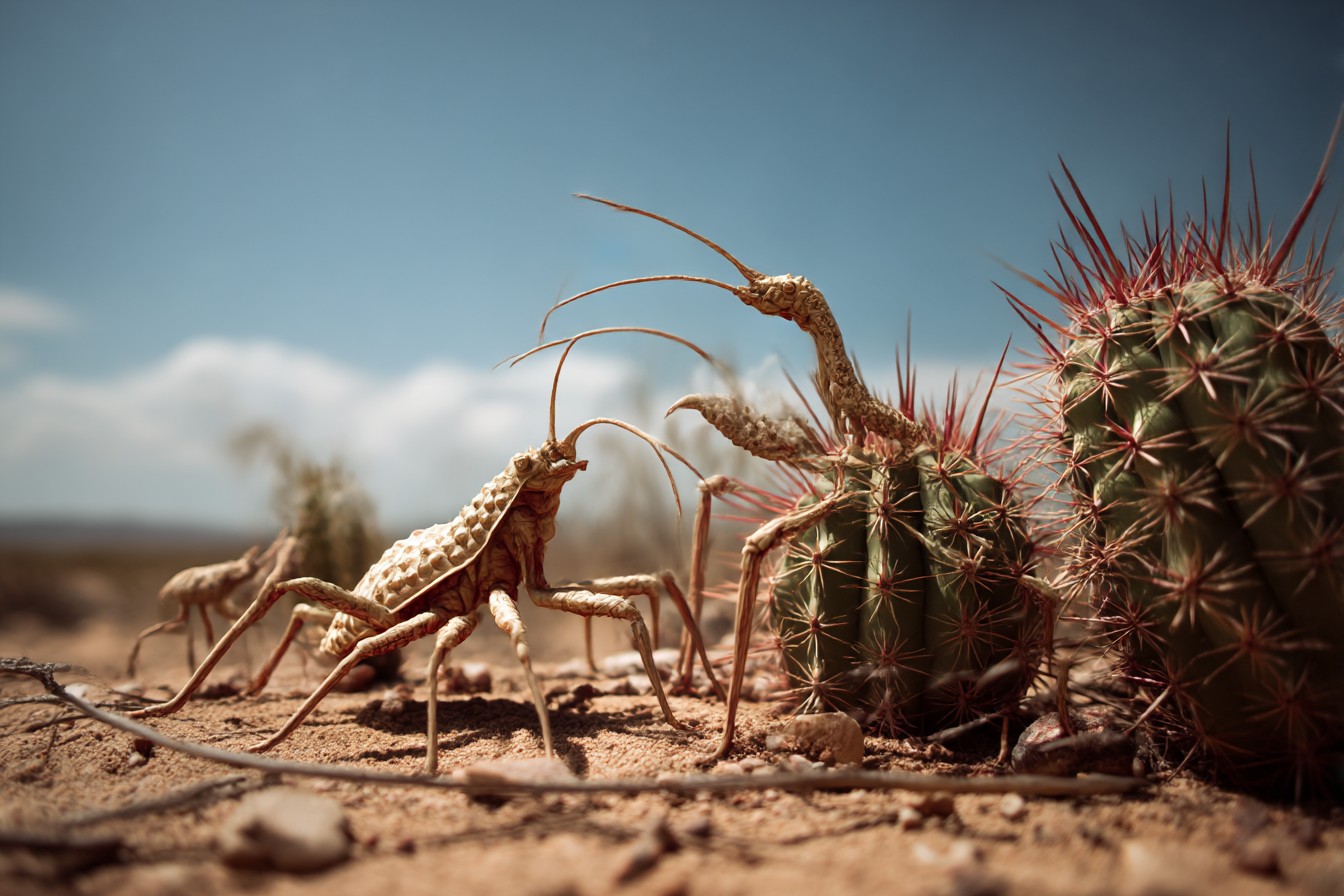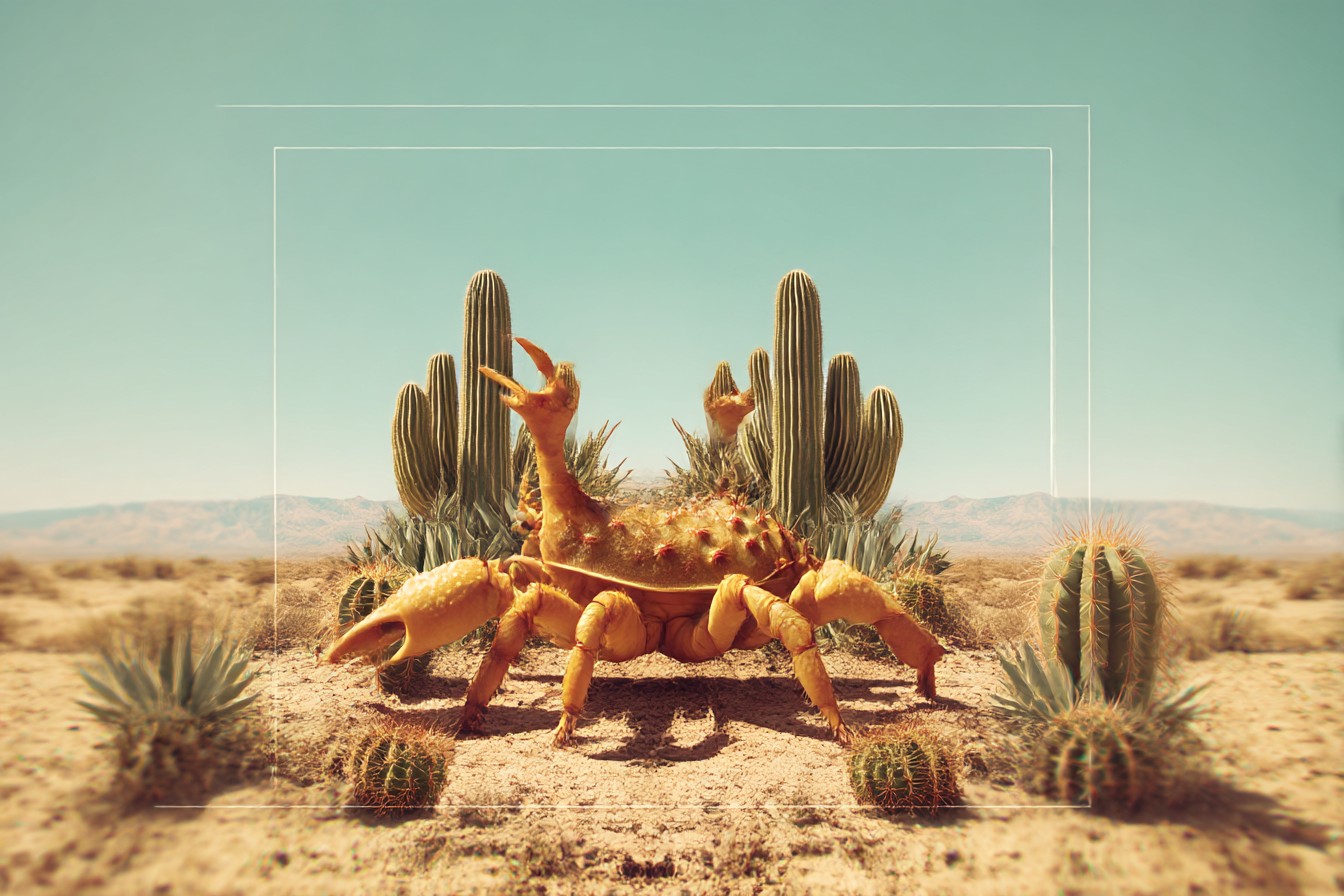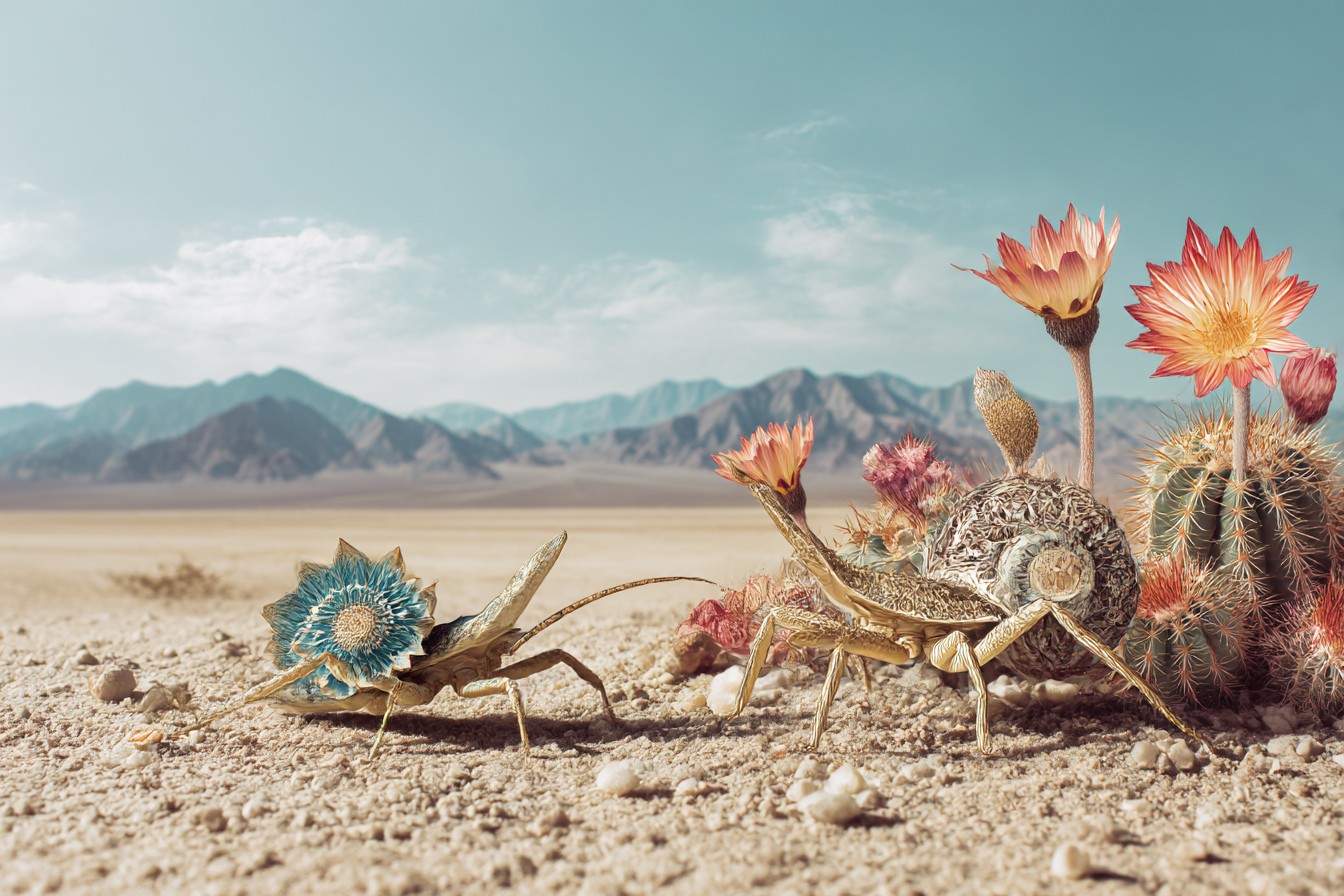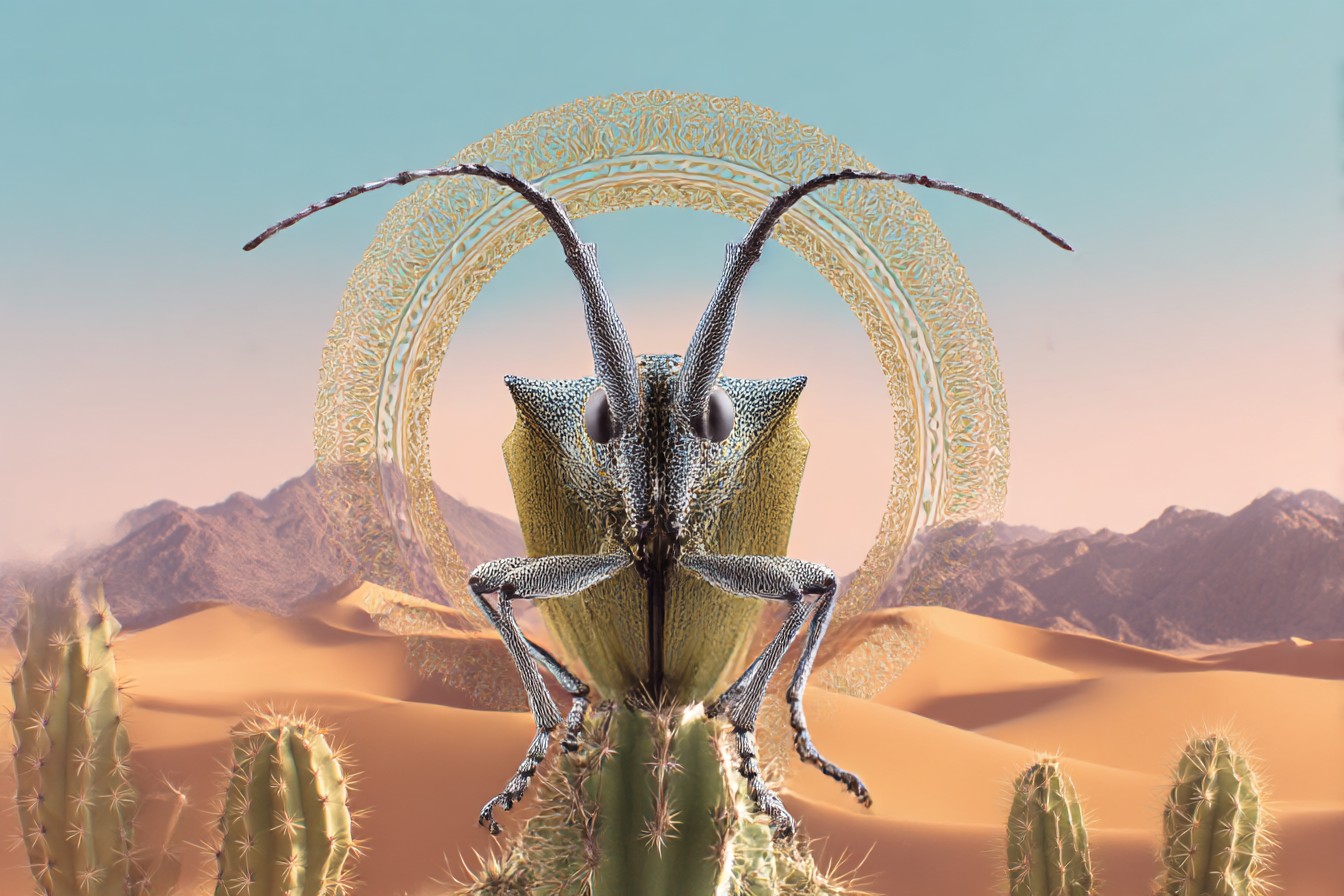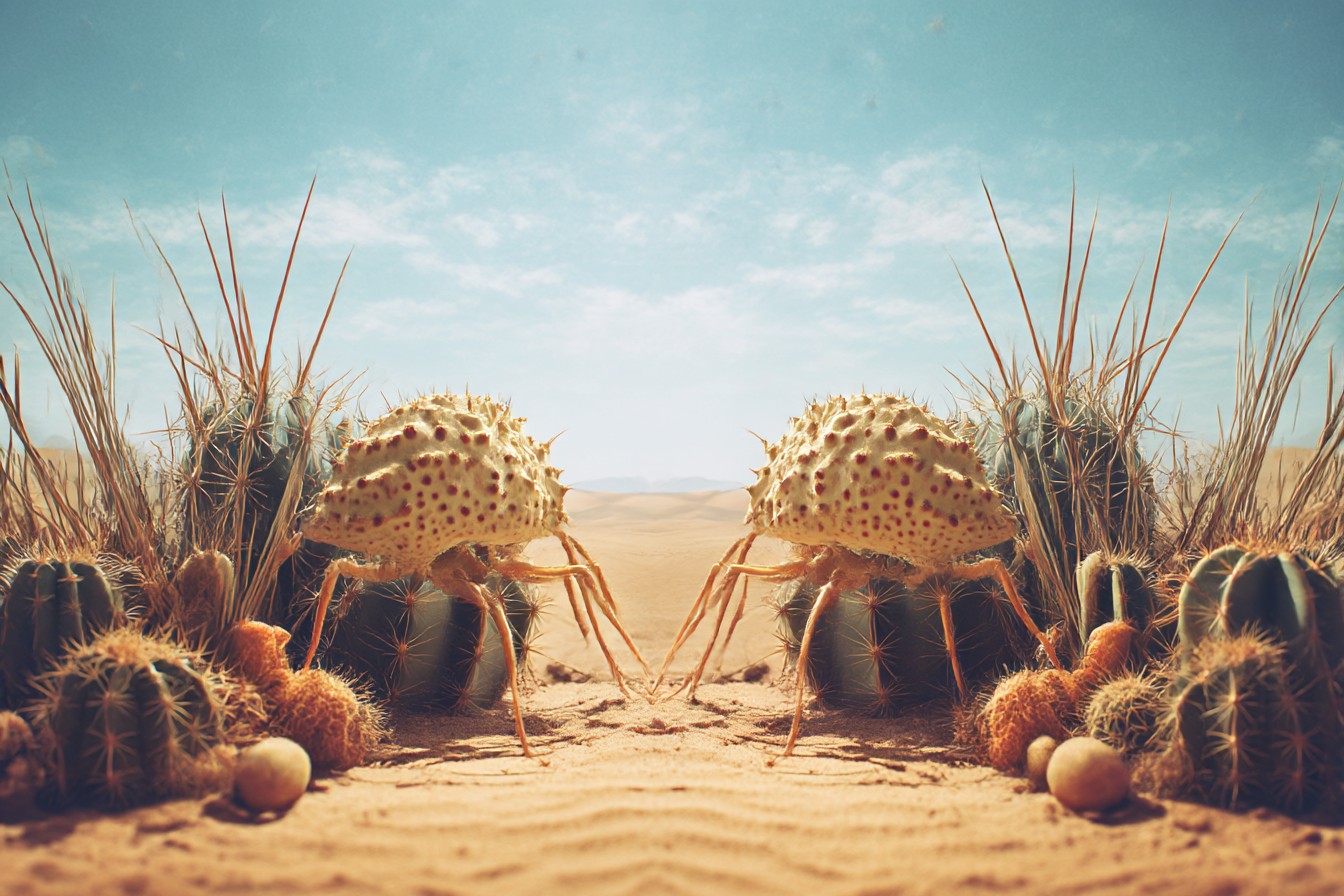I never meant to become obsessed with desert organisms. I’m a biochemist by training, not an ecologist, but something about watching a cactus wren build its nest in 42°C heat while I was supposed to be measuring soil alkalinity levels in the Sonoran Desert sparked a connection I couldn’t shake. Here was this tiny bird, thriving in conditions that had me guzzling water and hiding in shade every fifteen minutes, and it wasn’t just surviving—it was building something.
“Adaptation isn’t just about enduring,” I scribbled in my field notebook, sweat dripping onto the page. “It’s about reimagining what resources actually are.”
That was three years ago, during what my girlfriend Mei politely calls my “desert phase” and what my bank account remembers as “that time you spent our holiday fund on a spectrometer to analyze cactus cell wall compositions.” Look, I get carried away when science grabs me. But what started as professional curiosity evolved into something more personal when I returned home to find an eviction warning on our apartment door.
The irony wasn’t lost on me. There I was, studying how organisms thrive with minimal resources, while simultaneously failing to manage my own. Our rent had increased by 15%, my research funding had been delayed by bureaucratic nonsense, and Mei’s startup was in that terrifying pre-revenue phase that entrepreneurs optimistically call “building value” but which actually means “hemorrhaging savings.”
“We’re basically desert organisms now,” I told Mei that night, surrounded by spreadsheets and half-eaten ramen. “Limited water, hostile conditions, predatory landlords…”
She didn’t laugh. She just looked at me with that expression that somehow combines exasperation and fondness—the one I typically see after minor kitchen explosions during home experiments.
“Then maybe,” she said carefully, sliding my notebook toward me, “you should apply what you’ve been studying.”
The connection hit me like a runaway centrifuge. For weeks I’d been documenting survival strategies of desert organisms—their resource management systems, their physiological adaptations, their behavioral modifications—without once considering that these might be transferable principles rather than just fascinating biological case studies.
That night, I started what Josh (my former roommate who now suffers through weekly calls about whatever my current obsession is) refers to as “The Great Desert Economy Experiment.” If kangaroo rats could survive without drinking water, extracting all necessary moisture from metabolizing seeds, perhaps our household could extract more value from what we already had? If desert plants could drastically slow their metabolic processes during resource scarcity, maybe we could identify our own “unnecessary metabolic processes”?
My approach was methodical, if slightly deranged. I created a spreadsheet tracking our resource usage with the same precision I’d used to measure water retention in barrel cacti. The results were… illuminating. And mildly alarming.
We discovered we were “transpiring” money through dozens of tiny, almost invisible openings—those $4.75 coffee shop visits, streaming services we forgot we had (why were we paying for three different platforms?), and the absolutely horrifying sum we spent on takeout food because we were “too busy” to cook. Desert plants would never tolerate such inefficiency—they evolve specialized stomata that remain closed during the hottest part of the day to prevent water loss. We needed our own financial stomata.
The implementation phase began with what I called “xeriscaping our finances”—removing resource-intensive elements and replacing them with more efficient alternatives. Desert landscaping eliminates lawns in favor of native, drought-resistant plants. We eliminated spontaneous purchases in favor of planned consumption. I built a monitoring system that allowed us to track every resource input and output with embarrassing precision.
Mei, bless her patient heart, pointed out that I had crossed into obsessive territory when I started calculating the exact water and electricity cost of every shower. “Jamie,” she said, finding me timing her morning routine with a stopwatch, “there’s adaptation and then there’s whatever this is.”
She was right, of course. Just as in biological systems, extreme adaptations come with trade-offs. The kangaroo rat’s specialized kidneys are remarkably efficient but limit its habitat options. My ultra-frugal systems were saving money but creating new costs in time, mental energy, and relationship harmony. We needed balance.
That’s when I had my biggest insight. The most successful desert organisms aren’t just good at reducing resource usage—they’re masters at identifying overlooked resources that others can’t recognize or access.
Consider the mesquite tree with roots that extend up to 50 meters to reach groundwater invisible from the surface. Or desert tortoises that store water in their bladders for months. These organisms haven’t just adapted to use less—they’ve redefined what constitutes an available resource.
So I started examining our lives for “hidden aquifers”—untapped resources we weren’t recognizing. This is where things got interesting. Actually useful.
First came the skill audit. Mei is a brilliant programmer. I know my way around a laboratory and scientific equipment. Between us, we had marketable skills that weren’t being fully utilized. She started picking up freelance coding projects on weekends. I found a local community college willing to pay me to run weekend science workshops for kids (turns out my tendency to set things on fire in the name of education is considered an asset in that context).
Then came the asset inventory. Our apartment building had a storage room filled with abandoned furniture and electronics. With the landlord’s permission (secured after I helped fix his perpetually failing pilot light), we refurbished and sold several items. My laboratory skills proved surprisingly transferable to furniture restoration—both require attention to detail, understanding of material properties, and a willingness to experiment with chemical compounds that probably shouldn’t be used in poorly ventilated spaces.
We discovered community resources—like the tool library three blocks away that eliminated the need to purchase expensive equipment for one-time uses. The community garden with surplus vegetables every Thursday. The skill-sharing network where Mei traded programming lessons for car maintenance we couldn’t afford otherwise.
The results were measurable. Within six months, we’d increased our effective resources by 34% while reducing required inputs by 22% (yes, I kept meticulous data—I am, after all, still a scientist). But the less quantifiable benefits were equally significant.
Like desert organisms that form symbiotic relationships—think of mycorrhizal fungi that help cacti absorb more water and nutrients—we found ourselves developing more community connections. The neighbor who borrowed our ladder and returned it with homemade bread. The retiree two floors down who needed computer help and repaid us with babysitting when my sister visited with her toddler. The local repair café where I now volunteer once a month, mixing my scientific knowledge with practical applications to help people fix rather than replace broken items.
I also discovered something desert plants have known for millions of years: forced adaptation often leads to unexpected innovation. When resources became more constrained, we didn’t just do the same things more efficiently—we discovered entirely new approaches.
Take cooking. Previously, our approach was binary: either restaurant meals or basic home cooking. Resource limitations pushed us to experiment with preservation techniques (pickling, fermenting, dehydrating) that not only reduced food waste but actually created new flavors and dishes we wouldn’t have discovered otherwise. My scientific background found a new application in the kitchen, where I started documenting fermentation reactions with the same rigorous attention I once reserved for protein assays.
Perhaps most importantly, I learned from the communal adaptations of desert organisms. Ants form columns to minimize water loss in transit. Meerkats take turns as sentinels to warn the group of predators. Desert ecosystems thrive not through individual heroics but through intricate networks of cooperation.
We expanded our definition of “household” beyond our apartment walls. We created meal-sharing arrangements with two other couples in our building, rotating cooking duties to reduce the per-meal effort and cost. We established childcare swaps with my sister and another family, giving each household regular breaks without paying for babysitters. We formed a buying club with neighbors to purchase staples in bulk at significant discounts.
The experiment continues, though with less maniacal data collection these days (Mei instituted a “no spreadsheets at the dinner table” rule after a particularly intense discussion about optimal laundry detergent usage rates). Our financial situation has stabilized—we not only avoided eviction but managed to start building savings again. More importantly, we’ve developed resilience strategies that work even as conditions change.
When an unexpected medical bill hit us last month, we didn’t panic. Like the cactus that stores water during rare rainfall events, we had systems in place to absorb the shock. We had emergency funds, yes, but also a community network, flexible income streams, and reduced baseline expenses that gave us options beyond just “drain the savings.”
I still spend time in the desert when I can, but now I’m looking with different eyes. I’m not just observing biological adaptations—I’m studying resilience strategies developed over millions of years of extreme scarcity. Desert organisms have been managing with limited resources since long before humans invented budgets or spreadsheets.
The kangaroo rat never took a financial planning class, yet it navigates resource scarcity with elegant efficiency. The saguaro cactus doesn’t overthink its investment strategy, but it allocates resources with impressive precision across decades of growth. There’s a wisdom in these ancient adaptive systems that goes beyond mere survival.
Look, I’m not suggesting we should all start living like desert tortoises (though their retirement planning—evolving to live up to 150 years—is admittedly impressive). But there’s something profound about recognizing that the principles governing biological adaptation in extreme environments can guide human decisions in times of constraint.
The desert wasn’t trying to teach me anything. It was just doing what it’s done for millennia—demonstrating that scarcity isn’t just a limitation to overcome but a condition that drives innovation, cooperation, and sometimes beautiful efficiency.
Now, if you’ll excuse me, I need to check on my experimental water collection system on the balcony. It’s based on the Namibian fog-harvesting beetle’s shell structure, and preliminary results suggest I’ve only caused minor water damage to the downstairs neighbor’s ceiling. Progress, I call that.
